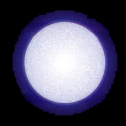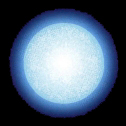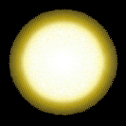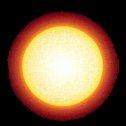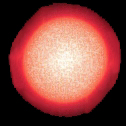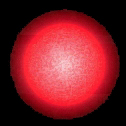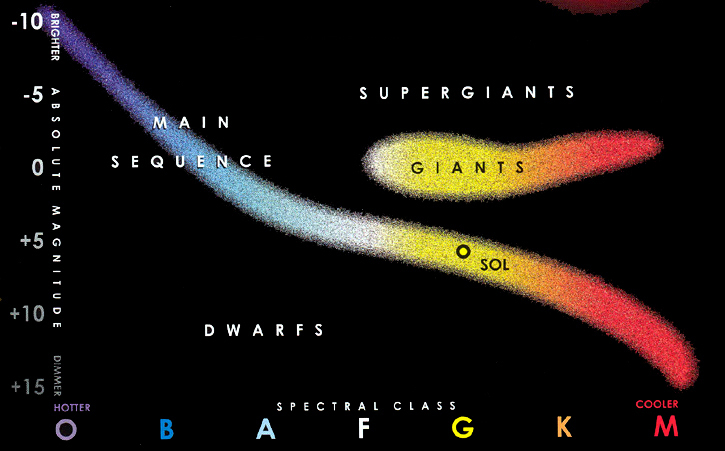Spectral Classes
From Starbase 900 Wiki
Contents |
Classifications
Each Spectral Class is divided into 10 Subclasses, ranging from 0 (hottest) to 9 (coolest). Stars are also divided into 6 categories according to luminosity: 1a (most luminous supergiants), 1b (less luminous supergiants), II (luminous giants), III (normal giants), IV (sub giants), and V (main sequence and dwarfs). For instance, Sol is classified as G2V, meaning that is it a relatively hot G Class main sequence star. In addition, Classes R, N, S, T, Q and W are used for relatively rare star types not found on the main sequence.
The Main Sequence
The Hertzsprung-Russell Diagram plots the spectral class or temperature of stars against their absolute magnitude (brightness of luminosity). About 90% of stars in our galaxy can be found on the Main Sequence, and remain there during their long lifetime of burning Hydrogen. When a star has used up all the Hydrogen in its core, it leaves the main sequence and becomes a red giant (upper right); very massive stars may become red supergiants.
Miscellaneous Star Info
Lazarus star
is a super nova remnant which, instead of being forced inward into neutron-star mode, survives as a normal star. After expansion into red giant phase, Lazarus stars collapse and undergo supernova for a second time.
Neutron Star
is usually type B-0 and measures only a few kilometers in diameter. An early main sequence star that has completed the nuclear burning processes often explodes. The reactive force of the explosion and the stars self-gravitation eject shell electrons (as in a white dwarf) and nuclear positrons. This leaves a neutronium core, possibly covered by a thin degenerate matter shell.
Population I
stars are old stars well down the main sequence (class F, G, K, and M stars) and short on heavier elements. Planetary systems accompanying Population I stars primarily consist of gas giants without accompanying satellites.
Population 2
stars are younger stars showing traces of heavier elements, hydrogen, and helium. Planetary systems accompanying Population 2 stars include gas giants, stony worlds, satellite companions and planetoid and comet shells.
Red Giant Star
The red giant phase is common in the evolution of many less massive stars. When core hydrogen is exhausted, gravitational collapse ignites hydrogen shell burning outside the core. The stars envelope expands far beyond the photosphere limit. The stars atmosphere is relatively cool.
Runaway Star
is a star with a velocity significantly different from its neighboring stars.
Supernova
when a massive young star exhausts its core hydrogen it undergoes second stage gravitational collapse. The resulting core temperature increase leads to runaway nuclear burning of helium, carbon, nitrogen and an explosion that blasts the stars outer layer into space. Supernova explosions are the major source of metals and other galactic elements.
T Tauri Star
is one manifestation of a star in formation undergoing initial nuclear burning.
Black Dwarf
is an object of stellar mass that has undergone gravitational collapse, reaching minimum potential energy and maximum entropy. Black dwarfs are sub planetary size and do not radiate.
Brown Dwarf
is a gaseous body producing much more energy through self-gravitation than it receives from the ambient medium, but which is not massive enough to initiate internal fusion reaction and, therefore, not truly a star. Brown dwarfs hot enough to produce visible light (sub stellar objects) are listed as Class S planets. They are both also known as supergiant gas planets. Some giant gas planets (Class A) may produce slightly more energy than they receive, but they are not generally considered to be brown dwarfs.
Red Dwarf
is a main sequence star of type M. The vast majority of stars in the galaxy are red dwarfs: small, dim and long lived.
White Dwarfs
primarily degenerate matter, this main sequence star, usually of type G-late A, has completed nuclear burning processes and has collapsed into a configuration roughly the size of a small planet. White dwarfs radiate at various levels of intensity through self gravitational collapse. Nuclear burning occurs only on the surface through accretion of unburned matter from other sources; in such cases, nuclear ignition can regularly occur and is the source of the ‘recurrent nova’ effect. The spectral class of white dwarf stars is usually prefixed with a 'D'.
